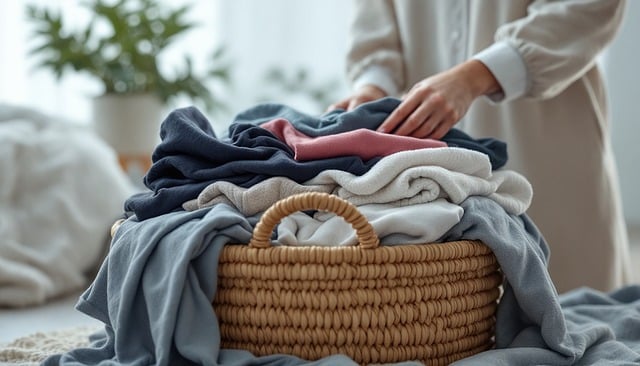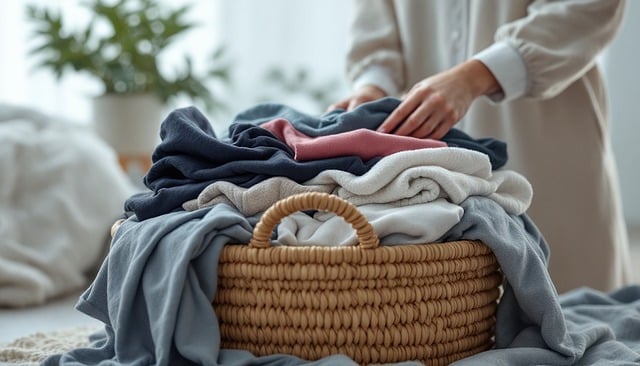Understanding the root causes of clutter – like inadequate storage, poor time management, emotional attachment or procrastination – is key to effective home organization and decluttering. Implementing targeted strategies such as adopting organizational systems, setting task deadlines, letting go of sentimental items, and establishing structured routines prevents future accumulation. Using diverse storage solutions, sorting trays, labels, and measuring tapes ensures a cleaner home. Sustained success requires identifying clutter hotspots, establishing practical systems, using designated spaces, and regularly decluttering to maintain a clutter-free environment.
Are you overwhelmed by a chaotic home environment? It’s time to embrace the power of decluttering and transform your space. This comprehensive guide uncovers the secrets to achieving an organized home, addressing the root causes of clutter and providing essential tools for efficient organization. From understanding why we accumulate items to implementing sustainable solutions, discover practical strategies that will simplify your life. Master the art of home organization and reclaim your peaceful sanctuary.
- Understanding the Mess: Uncovering the Root Causes of Clutter
- Essential Tools for Effective Decluttering and Organization
- Implementing Sustainable Solutions for Long-Term Home Organization
Understanding the Mess: Uncovering the Root Causes of Clutter

Understanding the Mess is a crucial first step in any successful home organization and decluttering journey. Clutter doesn’t just appear out of thin air; it’s often the result of underlying issues or habits that need addressing. Uncovering these root causes can provide valuable insights into why certain spaces tend to accumulate disorganization.
Common factors contributing to clutter include a lack of designated storage solutions, poor time management leading to piles building up, emotional attachment to items, or even an overwhelming sense of where to begin that results in procrastination. By identifying these triggers, individuals can start implementing strategies to combat them effectively. This might involve introducing more organizational systems, setting specific time frames for tasks, learning to let go of sentimental items, or creating a structured routine to prevent clutter from accumulating in the first place.
Essential Tools for Effective Decluttering and Organization

When tackling a messy home, having the right tools is essential for effective home organization and decluttering. The first step in any organizing endeavor is to gather a variety of storage solutions. These can include bins, baskets, boxes, and containers designed specifically for storing items like clothes, books, toys, or kitchenware. Each item should have its designated place, making it easier to keep the space tidy.
Additionally, tools such as sorting trays, labels, and measuring tapes are invaluable. Sorting trays help in separating items during the decluttering process, while labels ensure that everything is easily identifiable, even from a distance. A measuring tape aids in choosing storage solutions that fit the space perfectly, maximizing every inch of available area. These tools make the entire process more manageable and efficient, ultimately leading to a cleaner, better-organized home.
Implementing Sustainable Solutions for Long-Term Home Organization

Creating a tidy home doesn’t have to be a one-time, overwhelming task. Implementing sustainable solutions for long-term home organization and decluttering is key. Start by identifying areas that consistently accumulate clutter and pinpoint the reasons behind it. Once you understand these patterns, you can put in place practical systems to manage those items effectively. For instance, allocate specific spaces for frequently used items and use storage solutions like bins, baskets, or shelves to keep things organized.
Adopting a “one-in, one-out” policy can also help maintain order. This involves replacing an item when a new one enters your home, ensuring you don’t accumulate excess possessions. Regularly schedule decluttering sessions and aim to simplify your living spaces by letting go of items that no longer serve a purpose or bring joy. By making organization a continuous process, you’ll create a more sustainable and clutter-free home environment.
In conclusion, tackling messy homes requires a strategic approach to understanding and addressing clutter. By identifying the root causes and utilizing effective tools, anyone can achieve significant progress in home organization and decluttering. Implementing sustainable solutions ensures long-term success, creating a cleaner, more organized living space that enhances overall well-being.
